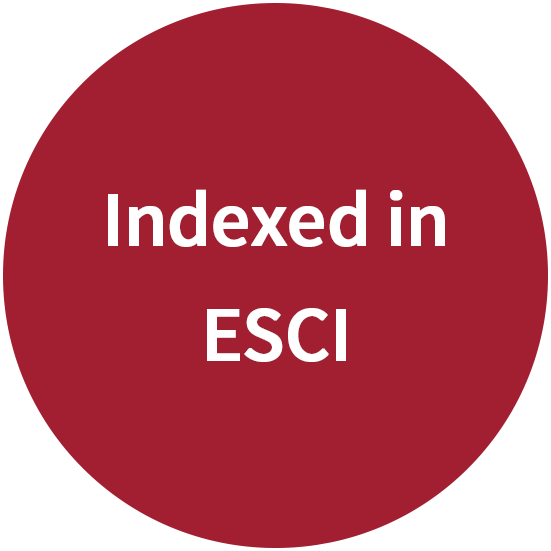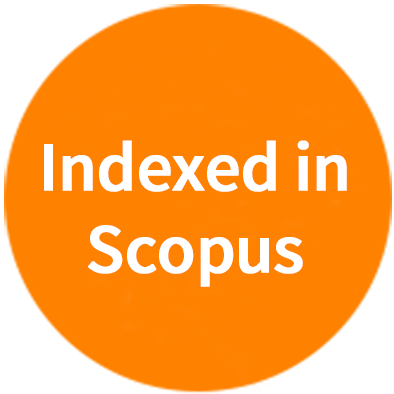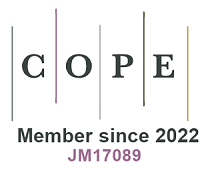REFERENCES
1. Rare diseases at FDA. Available from: https://www.fda.gov/patients/rare-diseases-fda [Last accessed on 9 Oct 2023].
2. EU research on rare diseases. Available from: https://research-and-innovation.ec.europa.eu/research-area/health/rare-diseases_en [Last accessed on 9 Oct 2023].
3. What is a rare disease? Available from: https://www.eurordis.org/information-support/what-is-a-rare-disease/ [Last accessed on 9 Oct 2023].
4. Public health challenges of rare diseases. Available from: https://rarediseases.info.nih.gov/ [Last accessed on 9 Oct 2023].
5. Siegel RL, Miller KD, Wagle NS, Jemal A. Cancer statistics, 2023. CA Cancer J Clin 2023;73:17-48.
6. Walter FM, Mills K, Mendonça SC, et al. Symptoms and patient factors associated with diagnostic intervals for pancreatic cancer (SYMPTOM pancreatic study): a prospective cohort study. Lancet Gastroenterol Hepatol 2016;1:298-306.
7. Xing H, Wang J, Wang Y, et al. Diagnostic value of CA 19-9 and carcinoembryonic antigen for pancreatic cancer: a meta-analysis. Gastroenterol Res Pract 2018;2018:8704751.
8. Luo G, Jin K, Deng S, et al. Roles of CA19-9 in pancreatic cancer: biomarker, predictor and promoter. Biochim Biophys Acta Rev Cancer 2021;1875:188409.
9. Liu Y, Li L, An S, Helmholz P, Palmer R, Baynam G. 3D face reconstruction with mobile phone cameras for rare disease diagnosis. In: Aziz H, Corrêa D, French T, editors. AI 2022: advances in artificial intelligence. Cham: Springer International Publishing; 2022. pp. 544-56.
10. Lam C, Yu C, Huang L, Rubin D. Retinal lesion detection with deep learning using image patches. Invest Ophthalmol Vis Sci 2018;59:590-6.
11. Sharma S, Malhotra D. A systematic study of intelligent face scanning in rare disease detection. In. Proceedings of 2nd International Conference on Artificial Intelligence: Advances and Applications: ICAIAA 2021: Springer; 2022, p. 451-62.
12. Soni H, Vyas A, Singh U. Identify rare disease patients from electronic health records through machine learning approach. In. 2018 International Conference on Inventive Research in Computing Applications (ICIRCA): IEEE; 2018, p. 1390-5.
13. Garcelon N, Burgun A, Salomon R, Neuraz A. Electronic health records for the diagnosis of rare diseases. Kidney Int 2020;97:676-86.
14. Dong H, Suárez-Paniagua V, Zhang H, et al. Ontology-driven and weakly supervised rare disease identification from clinical notes. BMC Med Inform Decis Mak 2023;23:86.
15. Cheng Y, Liu Y, Chen T, Yang Q. Federated learning for privacy-preserving AI. Commun ACM 2020;63:33-6.
16. Li T, Sahu AK, Talwalkar A, Smith V. Federated learning: challenges, methods, and future directions. IEEE Signal Proc Mag 2020;37:50-60.
17. Kariampuzha WZ, Alyea G, Qu S, et al. Precision information extraction for rare disease epidemiology at scale. J Transl Med 2023;21:157.
18. Regulation (EC) No 141/2000 of the European Parliament and of the Council of 16 December 1999 on orphan medicinal products. Official Journal L 2000;18:1-5. Available from: https://eur-lex.europa.eu/legal-content/EN/TXT/?uri=celex%3A32000R0141 [Last accessed on 9 Oct 2023].
19. Derayeh S, Kazemi A, Rabiei R, Hosseini A, Moghaddasi H. National information system for rare diseases with an approach to data architecture: a systematic review. Intractable Rare Dis Res 2018;7:156-63.
21. Cui L, Biswal S, Glass LM, Lever G, Sun J, Xiao C. CONAN: complementary pattern augmentation for rare disease detection. AAAI 2020;34:614-21.
22. Li W, Wang Y, Cai Y, Arnold C, Zhao E, Yuan Y. Semi-supervised rare disease detection using generative adversarial network. arXiv 2018:181200547.
23. Yu K, Wang Y, Cai Y, et al. Rare disease detection by sequence modeling with generative adversarial networks. arXiv 2019:190701022.
24. Yu K, Wang Y, Cai Y. Modelling patient sequences for rare disease detection with semi-supervised generative adversarial nets. In: Lemaire V, Malinowski S, Bagnall A, Bondu A, Guyet T, Tavenard R, editors. Advanced analytics and learning on temporal data. Cham: Springer International Publishing; 2020. pp. 141-50.
25. Arvaniti E, Claassen M. Sensitive detection of rare disease-associated cell subsets via representation learning. Nat Commun 2017;8:14825.
26. Jia X, Xiong Y, Zhang J, Zhang Y, Zhu Y. Few-shot radiology report generation for rare diseases. In. 2020 IEEE International Conference on Bioinformatics and Biomedicine (BIBM): IEEE; 2020, p. 601-8.
27. Besson R, Pennec EL, Allassonniere S, et al. A model-based reinforcement learning approach for a rare disease diagnostic task. arXiv 2018:181110112.
28. Segura-Bedmar I, Camino-Perdones D, Guerrero-Aspizua S. Exploring deep learning methods for recognizing rare diseases and their clinical manifestations from texts. BMC Bioinformatics 2022;23:263.
29. Prakash P, Chilukuri S, Ranade N, Viswanathan S. RareBERT: transformer architecture for rare disease patient identification using administrative claims. AAAI 2021;35:453-60.
30. Li X, Yu L, Jin Y, Fu C, Xing L, Heng P. Difficulty-aware meta-learning for rare disease diagnosis. In: Martel AL, Abolmaesumi P, Stoyanov D, Mateus D, Zuluaga MA, Zhou SK, Racoceanu D, Joskowicz L, editors. Medical image computing and computer assisted intervention-MICCAI 2020. Cham: Springer International Publishing; 2020. pp. 357-66.
31. Lopes RR, Bleijendaal H, Ramos LA, et al. Improving electrocardiogram-based detection of rare genetic heart disease using transfer learning: an application to phospholamban p.Arg14del mutation carriers. Comput Biol Med 2021;131:104262.
32. Taroni JN, Grayson PC, Hu Q, et al. MultiPLIER: a transfer learning framework for transcriptomics reveals systemic features of rare disease. Cell Syst 2019;8:380-94.e4.
33. Li J, He Z, Zhang M, et al. Estimating rare disease incidences with large-scale internet search data: development and evaluation of a two-step machine learning method. JMIR Infodemiology 2023;3:e42721.
34. Spiga O, Cicaloni V, Fiorini C, et al. Machine learning application for development of a data-driven predictive model able to investigate quality of life scores in a rare disease. Orphanet J Rare Dis 2020;15:46.
35. Lee J, Liu C, Kim J, et al. Deep learning for rare disease: a scoping review. J Biomed Inform 2022;135:104227.
36. Schaefer J, Lehne M, Schepers J, Prasser F, Thun S. The use of machine learning in rare diseases: a scoping review. Orphanet J Rare Dis 2020;15:145.
37. Banerjee J, Taroni JN, Allaway RJ, Prasad DV, Guinney J, Greene C. Machine learning in rare disease. Nat Methods 2023;20:803-14.
38. Decherchi S, Pedrini E, Mordenti M, Cavalli A, Sangiorgi L. Opportunities and challenges for machine learning in rare diseases. Front Med 2021;8:747612.
39. Brasil S, Pascoal C, Francisco R, Dos Reis Ferreira V, Videira PA, Valadão AG. Artificial intelligence (AI) in rare diseases: is the future brighter? Genes 2019;10:978.
40. Groft SC, Posada M, Taruscio D. Progress, challenges and global approaches to rare diseases. Acta Paediatr 2021;110:2711-6.
41. Brasil S, Neves CJ, Rijoff T, et al. Artificial intelligence in epigenetic studies: shedding light on rare diseases. Front Mol Biosci 2021;8:648012.
42. Hurvitz N, Azmanov H, Kesler A, Ilan Y. Establishing a second-generation artificial intelligence-based system for improving diagnosis, treatment, and monitoring of patients with rare diseases. Eur J Hum Genet 2021;29:1485-90.
43. Skweres-Kuchta M, Czerska I, Szaruga E. Literature review on health emigration in rare diseases-a machine learning perspective. Int J Environ Res Public Health 2023;20:2483.
44. Visibelli A, Roncaglia B, Spiga O, Santucci A. The impact of artificial intelligence in the odyssey of rare diseases. Biomedicines 2023;11:887.
45. Roman-Naranjo P, Parra-Perez AM, Lopez-Escamez JA. A systematic review on machine learning approaches in the diagnosis of rare genetic diseases. medRxiv 2023:23285203.
46. Hasani N, Farhadi F, Morris MA, et al. Artificial intelligence in medical imaging and its impact on the rare disease community: threats, challenges and opportunities. PET Clin 2022;17:13-29.
47. McMahan B, Moore E, Ramage D, Hampson S, y Arcas BA. Communication-efficient learning of deep networks from decentralized data. PMLR 2017;54:1273-82.
48. Wang J, Zeng S, Long Z, Wang Y, Xiao H, Ma F. Knowledge-enhanced semi-supervised federated learning for aggregating heterogeneous lightweight clients in IoT. In: Shekhar S, Zhou Z, Chiang Y, Stiglic G, editors. Proceedings of the 2023 SIAM International Conference on Data Mining (SDM). Philadelphia: Society for Industrial and Applied Mathematics; 2023. pp. 496-504.
49. Tan Y, Long G, Liu L, et al. FedProto: federated prototype learning across heterogeneous clients. AAAI 2022;36:8432-40.
50. Jere MS, Farnan T, Koushanfar F. A taxonomy of attacks on federated learning. IEEE Secur Privacy 2021;19:20-8.
51. Solanki S, Kanaparthy S, Damle S, Gujar S. Differentially private federated combinatorial bandits with constraints. In: Amini M, Canu S, Fischer A, Guns T, Kralj Novak P, Tsoumakas G, editors. Machine learning and knowledge discovery in databases. Cham: Springer Nature Switzerland; 2023. pp. 620-37.
52. Lycklama H, Burkhalter L, Viand A, Küchler N, Hithnawi A. RoFL: robustness of secure federated learning. In. 2023 IEEE Symposium on Security and Privacy (SP): IEEE Computer Society; 2023, p. 453-76.
53. Lyu L, Xu X, Wang Q, Yu H. Collaborative Fairness in federated learning. In: Yang Q, Fan L, Yu H, editors. Federated learning. Cham: Springer International Publishing; 2020. pp. 189-204.
54. Wang J, Qian C, Cui S, Glass L, Ma F. Towards federated COVID-19 vaccine side effect prediction. In: Amini M, Canu S, Fischer A, Guns T, Kralj Novak P, Tsoumakas G, editors. Machine learning and knowledge discovery in databases. Cham: Springer Nature Switzerland; 2023. pp. 437-52.
55. Liu Y, Huang A, Luo Y, et al. FedVision: an online visual object detection platform powered by federated learning. AAAI 2020;34:13172-9.
56. Huang A, Liu Y, Chen T, et al. StarFL: hybrid federated learning architecture for smart urban computing. ACM Trans Intell Syst Technol 2021;12:1-23.
57. Long G, Tan Y, Jiang J, Zhang C. Federated learning for open banking. In: Yang Q, Fan L, Yu H, editors. Federated learning. Cham: Springer International Publishing; 2020. pp. 240-54.
58. IBM federated learning. Available from: https://www.ibm.com/docs/en/cloud-paks/cp-data/4.7.x?topic=models-federated-learning [Last accessed on 9 Oct 2023].
59. Federated learning on Google Cloud. Available from: https://cloud.google.com/architecture/federated-learning-google-cloud [Last accessed on 9 Oct 2023].
60. TensorFlow federated: machine learning on decentralized data. Available from: https://www.tensorflow.org/federated [Last accessed on 9 Oct 2023].
61. Dang TK, Lan X, Weng J, Feng M. Federated learning for electronic health records. ACM Trans Intell Syst Technol 2022;13:1-17.
62. Xu J, Glicksberg BS, Su C, Walker P, Bian J, Wang F. Federated learning for healthcare informatics. J Healthc Inform Res 2021;5:1-19.
63. Antunes RS, André da Costa C, Küderle A, Yari IA, Eskofier B. Federated learning for healthcare: systematic review and architecture proposal. ACM Trans Intell Syst Technol 2022;13:1-23.
64. Oh W, Nadkarni GN. Federated learning in health care using structured medical data. Adv Kidney Dis Health 2023;30:4-16.
65. Pfitzner B, Steckhan N, Arnrich B. Federated learning in a medical context: a systematic literature review. ACM Trans Internet Technol 2021;21:1-31.
66. Rieke N, Hancox J, Li W, et al. The future of digital health with federated learning. NPJ Digit Med 2020;3:119.
67. Reddy K, Gadekallu TR. A comprehensive survey on federated learning techniques for healthcare informatics. Comput Intell Neurosci 2023;2023:8393990.
68. Sheller MJ, Reina GA, Edwards B, Martin J, Bakas S. Multi-institutional deep learning modeling without sharing patient data: a feasibility study on brain tumor segmentation. In: Crimi A, Bakas S, Kuijf H, Keyvan F, Reyes M, van Walsum T, editors. Brainlesion: glioma, multiple sclerosis, stroke and traumatic brain injuries. Cham: Springer International Publishing; 2019. pp. 92-104.
69. Feki I, Ammar S, Kessentini Y, Muhammad K. Federated learning for COVID-19 screening from Chest X-ray images. Appl Soft Comput 2021;106:107330.
70. Linardos A, Kushibar K, Walsh S, Gkontra P, Lekadir K. Federated learning for multi-center imaging diagnostics: a simulation study in cardiovascular disease. Sci Rep 2022;12:3551.
71. Vaid A, Jaladanki SK, Xu J, et al. Federated learning of electronic health records to improve mortality prediction in hospitalized patients with COVID-19: machine learning approach. JMIR Med Inform 2021;9:e24207.
72. Salim MM, Park JH. Federated learning-based secure electronic health record sharing scheme in medical informatics. IEEE J Biomed Health Inform 2023;27:617-24.
73. Islam SM, Kwak D, Kabir H, Hossain M, Kwak KS. The internet of things for health care: a comprehensive survey. IEEE Access 2015;3:678-708.
74. Elayan H, Aloqaily M, Guizani M. Sustainability of healthcare data analysis IoT-based systems using deep federated learning. IEEE Internet Things J 2022;9:7338-46.
75. Wu Q, Chen X, Zhou Z, Zhang J. FedHome: cloud-edge based personalized federated learning for in-home health monitoring. IEEE Trans on Mobile Comput 2022;21:2818-32.
76. Arikumar KS, Prathiba SB, Alazab M, et al. FL-PMI: federated learning-based person movement identification through wearable devices in smart healthcare systems. Sensors 2022;22:1377.
77. Li J, Meng Y, Ma L, et al. A federated learning based privacy-preserving smart healthcare system. IEEE T Ind Inform 2021;18:2021-31.
78. Kurniawan H, Mambo M. Homomorphic encryption-based federated privacy preservation for deep active learning. Entropy 2022;24:1545.
79. Alam T, Gupta R. Federated learning and its role in the privacy preservation of iot devices. Future Internet 2022;14:246.
80. Singh S, Rathore S, Alfarraj O, Tolba A, Yoon B. A framework for privacy-preservation of IoT healthcare data using federated learning and blockchain technology. Future Gener Comp Sy 2022;129:380-8.
81. Wu N, Yu L, Yang X, Cheng K-T, Yan Z. FedIIC: towards robust federated learning for class-imbalanced medical image classification. arXiv 2022:220613803.
82. Pati S, Baid U, Edwards B, et al. Federated learning enables big data for rare cancer boundary detection. Nat Commun 2022;13:7346.
83. Chen B, Chen T, Zeng X, et al. DFML: dynamic federated meta-learning for rare disease prediction. IEEE/ACM Trans Comput Biol Bioinform 2023:1-11.
84. Goto S, Solanki D, John JE, et al. Multinational federated learning approach to train ecg and echocardiogram models for hypertrophic cardiomyopathy detection. Circulation 2022;146:755-69.
85. Lu MY, Chen RJ, Kong D, et al. Federated learning for computational pathology on gigapixel whole slide images. Med Image Anal 2022;76:102298.
86. Wang J. Rare disease detection with federated learning. Available from: https://github.com/JackqqWang/rare_disease_detection_fl/blob/main/main.md [Last accessed on 10 Oct 2023].
87. Thrun S. Lifelong learning algorithms. In: Thrun S, Pratt L, editors. Learning to learn. Boston: Springer US; 1998. pp. 181-209.
88. Fontenla-Romero Ó, Guijarro-Berdiñas B, Martinez-Rego D, Pérez-Sánchez B, Peteiro-Barral D. Online machine learning. In: editor^editors, editor. Efficiency and scalability methods for computational intellect:IGI global;2013.p.27-54.
89. Chen C, Liang J, Ma F, Glass L, Sun J, Xiao C. Unite: uncertainty-based health risk prediction leveraging multi-sourced data. In. Proceedings of the Web Conference 2021; 2021, p. 217-26.
90. The portal for rare diseases and orphan drugs. Available from: https://www.orpha.net/ [Last accessed on 9 Oct 2023].
91. An online catalog of human genes and genetic disorders. Available from: https://www.omim.org/ [Last accessed on 9 Oct 2023].








